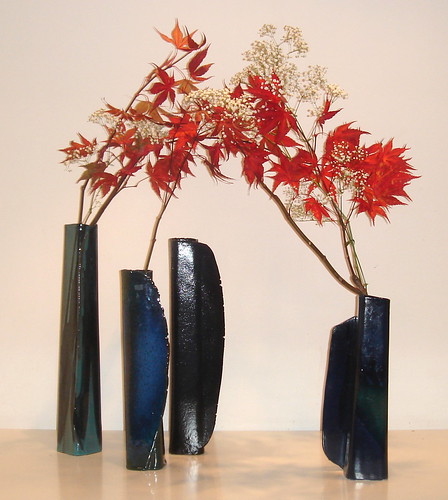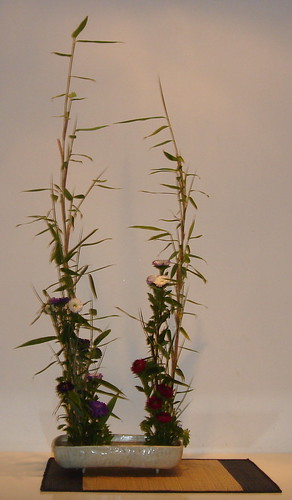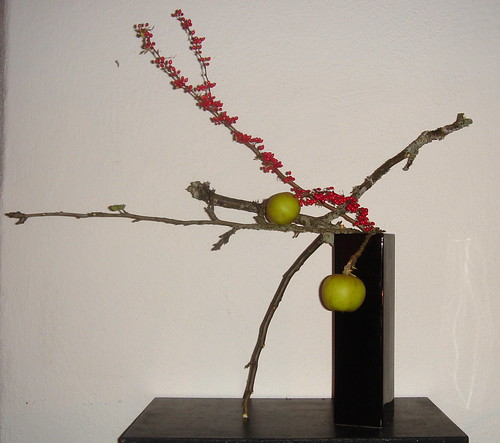The position as head or Iemoto of an ikebana school is often inherited in the family of the founder. In earlier posts I've been blogging about how Sofu Teshigahara started the Sogetsu School of Ikebana in 1927. When Sofu died in 1979 his daughter Kasumi became the second Iemoto of the school. Her career was cut short by her early death in 1980, and her brother Hiroshi Teshigahara became the third Iemoto of the Sogetsu School. The present Iemoto, Akane Teshigahara is the daugther of Hiroshi.
Today Sogetsu is one of the largest ikebana schools worldwide. But it is not the only school inherited in the Teshigahara family. The father of Sofu, Wafu Teshigahara, was also an ikebana artist and had started a school of his own long before Sofu, the eldest son, left to form a new style of ikebana.

The Wafu School was founded in 1896 by Wafu Teshigahara. He had originally been trained in the Misho School in the town west of Osaka where the family lived at that time, before moving to Tokyo about 1906. When Wafu died in 1930, his next eldest son took over leadership of the school, adopting the name Wafu. Wafu II is the man on the lovely photo to the left, showing off an ikebana arrangement with fruit bearing branches. Today, his grandson, Wafu III, heads the school and is grooming his only child, a daughter, to lead the school in the future.
Compared to the Sogetsu School the Wafu School is a much smaller School. With it's Headquarter in Tokyo, the school has chapters throughout Japan and in other countries, including the U.S. where there is a large and active chapter in California. Wafu ikebana emphasizes the natural beauty of plant materials. It's a modern approach to ikebana with the motto "Arrange the flowers that you like - suitably - in a container that you like."
Information on Wafu School of Ikebana provided by Nancy Locke, Instructor and Publicity Chairperson, San Francisco.



























